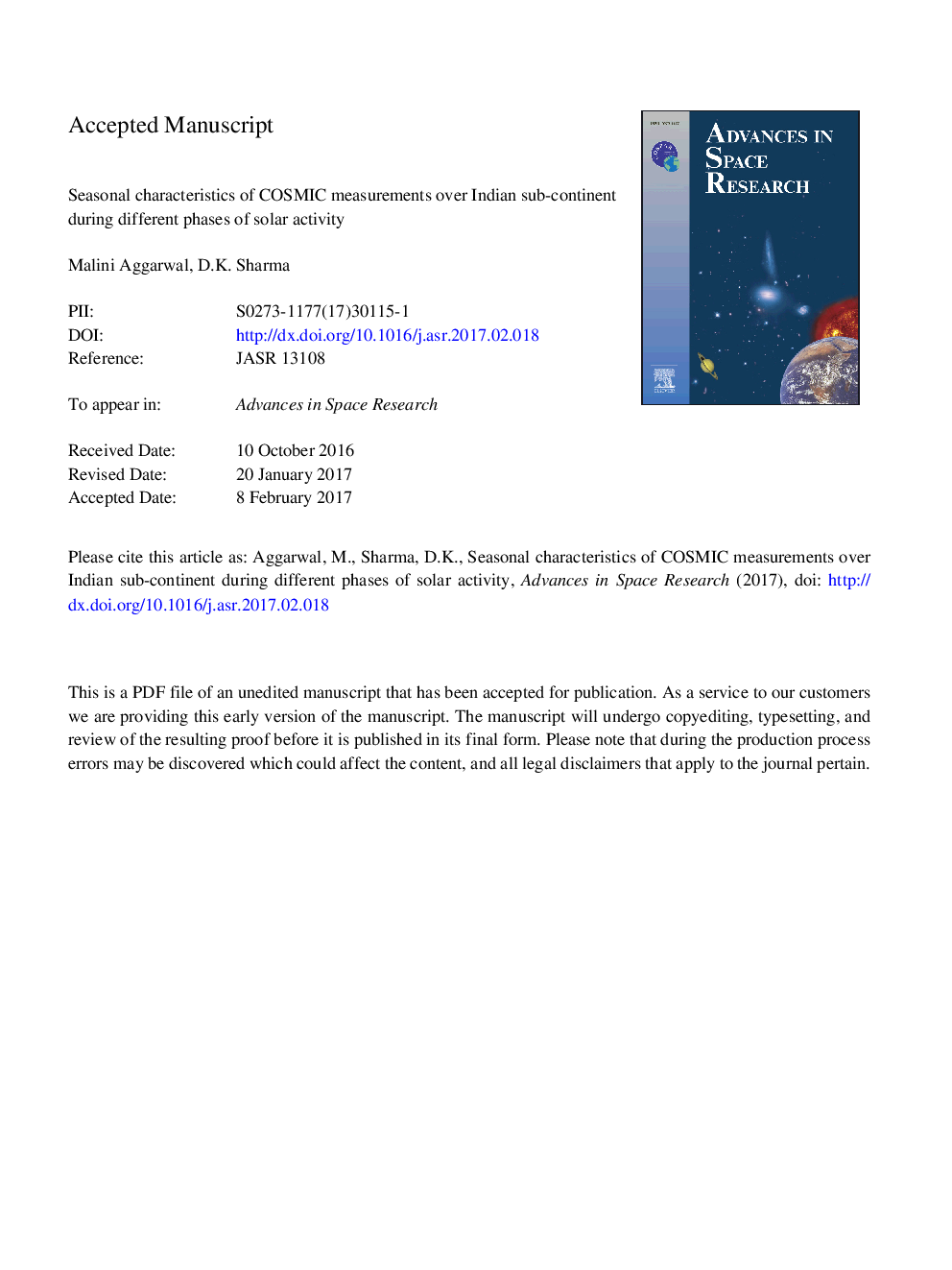| Article ID | Journal | Published Year | Pages | File Type |
|---|---|---|---|---|
| 5486512 | Advances in Space Research | 2017 | 30 Pages |
Abstract
The seasonal characteristics of F2 region is investigated using peak electron density (NmF2) and corresponding altitude (hmF2) measurements obtained by COSMIC observations over Indian sub-continent (Geog. 5-40°N and 60-100°E) for the complete mission during the solar cycle 24 (Apr, 2006-Dec, 2013). A stronger EIA is observed in summer and winter during high solar activity whereas occurs in equinoxes during all levels of solar activity. The noontime winter anomaly in NmF2 is absent/weaker during low (2006-2009)/high (2010-2013) solar activity over equator whereas is stronger in low and moderate solar activity (2006-2007 and 2010-2011) but absent in minimum and maximum (2008-2009 and 2012-2013) solar activity over low-latitude respectively. The higher hmF2 is observed over the equator throughout the day (equator: 230-415 km and low-latitude: 220-340 km). The observed parameters, NmF2 and hmF2 are compared with the IRI-modeled values using CCIR and URSI options. The comparison exhibits a higher discrepancy in NmF2 in nighttime and morning for equatorial and lower discrepancy for the whole day over the low-latitude whereas smaller (<20%) discrepancy exists in the hmF2 throughout the day using both IRI options. In conclusion, we found CCIR option in more agreement to the observed values for both equatorial and low-latitude regions respectively.
Keywords
Related Topics
Physical Sciences and Engineering
Earth and Planetary Sciences
Space and Planetary Science
Authors
Malini Aggarwal, D.K. Sharma,
